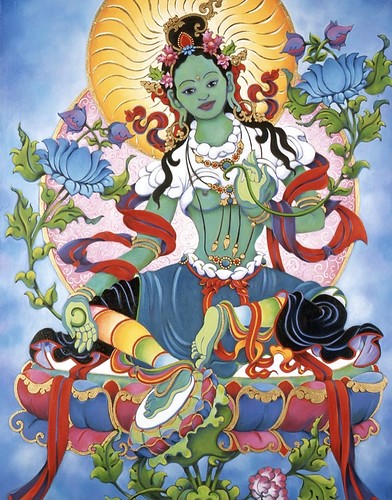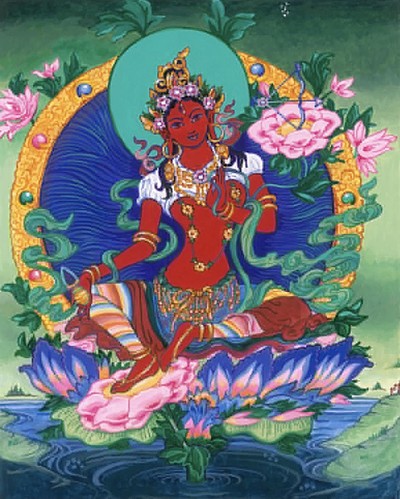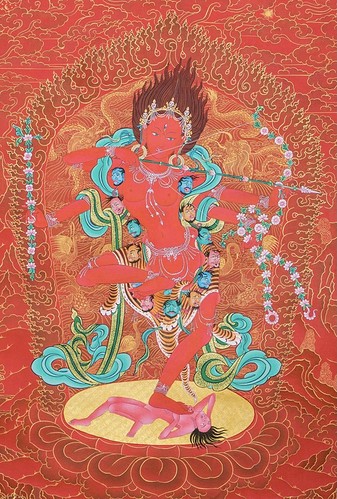Kurukulla Subjugation Visualization (from the Hevajra Tantra)
1.) One begins their visualization as the goddess Kurukulla. Remember to flesh out as many details as you can when visualizing this. See and feel the necklace of heads around your neck, see and feel your wild hair and skull crown, see and feel your multiple arms holding all of the tools and implements of subjugation.
2.) Visualize a glowing red hrih syllable circling your heart. The Hrih syllable causes a red lotus flower to sprout from your heart.
3.) Visualize your target appearing before you upon a wind mandala. They are naked.
4.) Visualize several fierce red bees emerging from the lotus flower in your heart. As you exhale, they are sent through your left nostril and into the left nostril of your target.
5.) Visualize yourself as Kurukulla drawing a red lotus arrow and firing it directly into the heart of your target. A red lotus flower sprouts from the arrow and the bees cluster around it, extending their pollen gathering tubes.
6.) Red lights emerges from your right ear in the form of red iron hooks and glowing Hrih syllables. The light transforms into another red lotus arrow and is fired into the heart (if the target is male) or the genitals (if your target is female). Your target becomes extremely aroused or starts to drip.
7.) The bees exit from your target’s right nostril carrying the syllables of their name back through your right nostril and into the lotus flower in your own heart where they dissolve.
8.) Several more arrows are shot into the heart or genitals of your target, stirring more red bees to emerge from your heart, through your left nostril, and into the left nostril of your target. The bees reach the heart of your target and fetch more syllables from their name.
9.) The bees carry the remaining syllables from your target’s name back to the lotus flower in your heart from which they emerged.
10.) A net of red lotus flowers is cast over your target and a wall of flaming red Hrih’s surrounded them.
11.) Your (Kurukulla’s) third eye opens and gazes into the eyes of your target. Visualize exactly what you want them to do and see it as strongly as possible, preferably from their point of view.
12.) A lasso of red lotus flowers is thrown around the neck of your target and red iron hooks enter your target as red beams of light through the heart (if the target is male) or the genitals (if the target is female).
13.) Recite aloud “OM KURUKULLE such and such a person VASAM-KURU SVAHA!”
14.) Acknowledge that your target is full of lust and delight over you.
-Kurukulla enjoys offerings of red flowers, red candles, fresh water, and red incense, especially red sandalwood.




